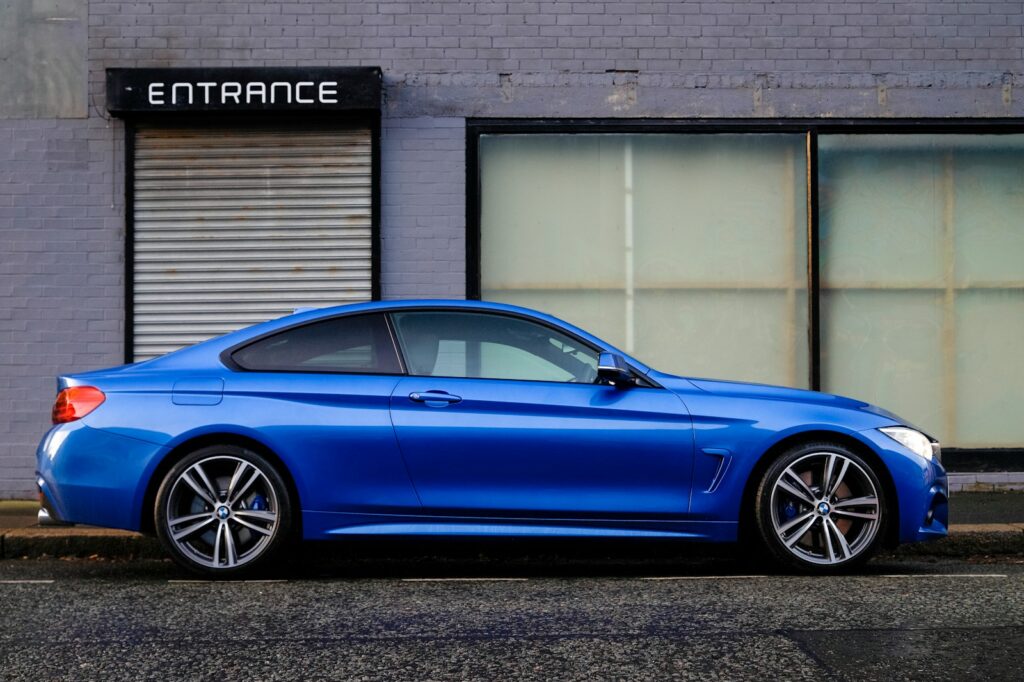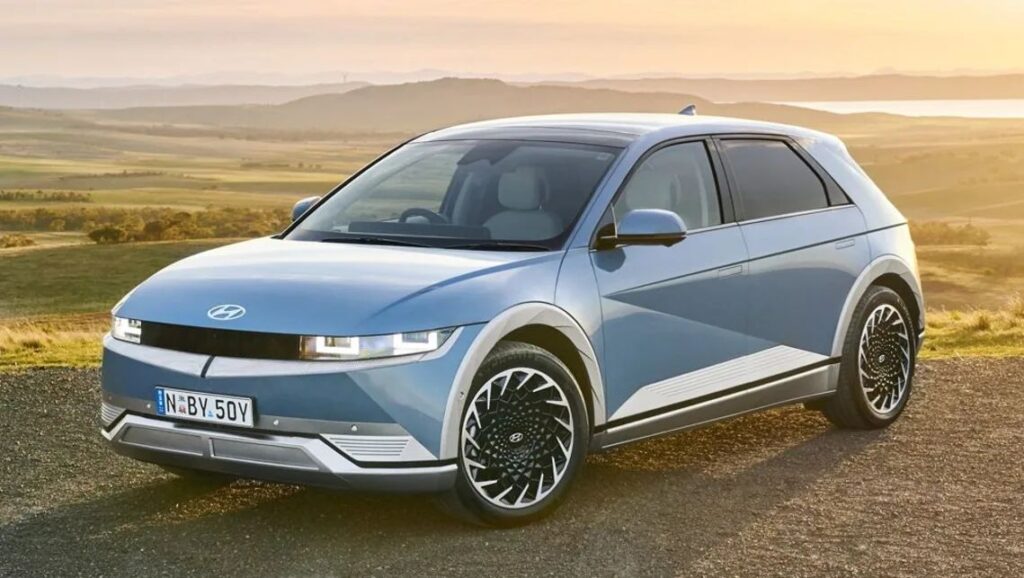
Electric vehicles (EVs) have surged into the American automotive landscape, with nearly 1.2 million units sold last year, now accounting for 7.6 percent of total vehicle sales. While these cars offer undeniable benefits like lower daily operating costs, zero tailpipe emissions, and generally minimal maintenance, a significant shadow often looms in the minds of prospective buyers: the specter of expensive battery replacements. It’s a concern frequently amplified on social media, suggesting that EV batteries are as fragile as a smartphone’s and prone to rapid, costly failure.
Indeed, a recent study by GBK Collective highlighted that battery replacement costs are the biggest concern for those considering an EV or hybrid purchase. Yet, it’s crucial to distinguish between widespread anxieties and the actual data. The odds of needing to replace an EV battery are, in fact, quite low. According to research from Recurrent, battery pack replacement occurs in only about 1.5 percent of EVs. Furthermore, the Department of Energy’s predictive modeling suggests current EV batteries are likely to last between 12 and 15 years in moderate climates, and 8 to 12 years in more extreme conditions, often outliving the perceived lifespan.
However, while the likelihood is low, issues that necessitate a replacement can still arise, especially with older models or in the event of an accident or manufacturing flaw. When such an event occurs, the costs, even with significant reductions in battery prices over the past decade, can range from around $7,000 to nearly $30,000. This variability depends on numerous factors including the vehicle’s make, model, battery size, and market conditions. For consumers looking to make informed decisions, understanding these potential pitfalls and the specific experiences of various EV models is paramount. We will delve into seven electric cars that have garnered attention for their battery replacement costs, offering a detailed, data-driven perspective to help you navigate the nuances of EV ownership.
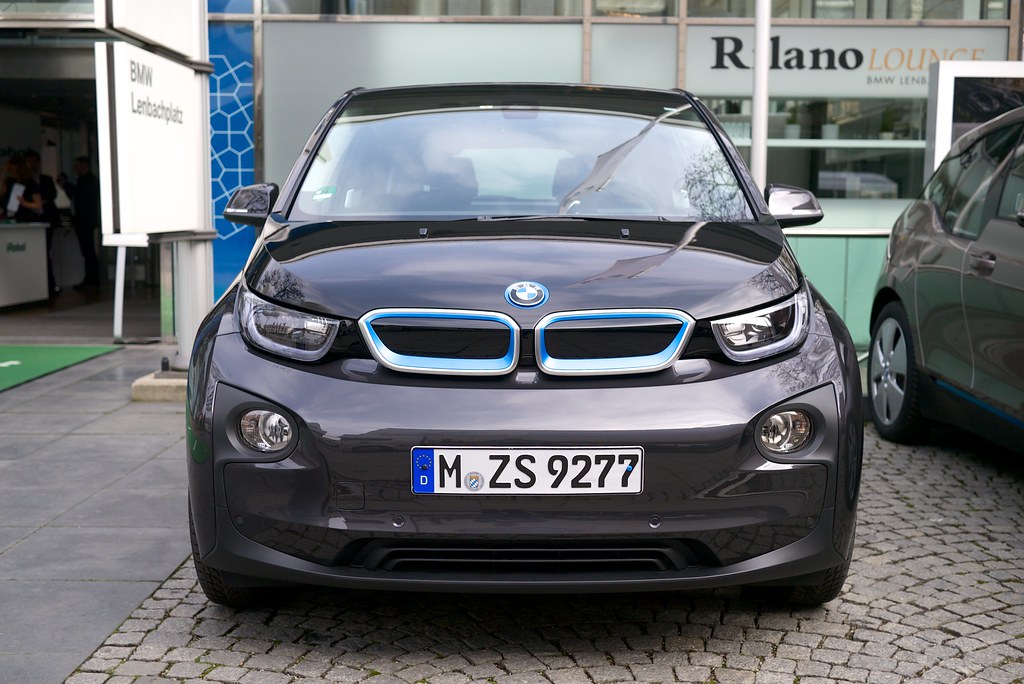
1. **BMW i3**For those who appreciate distinctive design and early EV adoption, the BMW i3 holds a special place. However, for owners considering battery replacement, this “cult classic” vehicle presents some of the most startling figures. Initially, BMW reported in 2016 that replacing a battery for models from 2013-2016 (which came with 22 kWh packs) would cost approximately $16,000. This figure, equating to $727 per kilowatt-hour (kWh) in 2016 dollars, was already substantial.
As the BMW i3 is no longer in production, the landscape for battery replacements has become even more challenging. Recent reports indicate that official BMW dealership quotes for battery replacements have soared, sometimes reaching over $33,000, with one customer even purportedly quoted an astounding $71,000. These figures are significantly higher than typical battery module costs, which are cited around $3,500, illustrating the complex pricing structure and logistical challenges associated with servicing discontinued models through official channels.
This dramatic increase in replacement costs stems from several factors, including the vehicle’s age, the scarcity of original parts, and the labor intensity required for such a specialized repair. For i3 owners, these high official prices often lead them to seek alternative solutions. The emergence of third-party shops offering compatible 54 kWh upgrade packs for around $6,500 provides a stark contrast and a more economically viable path for many. This situation highlights how the absence of direct manufacturer support for older models can turn a significant repair into an almost prohibitive expense.
In essence, while the BMW i3 remains a beloved EV, its battery replacement costs, especially through official dealerships, have positioned it as a prime example of an EV where long-term battery issues can indeed become a budget-breaking proposition. Owners are increasingly relying on a nascent third-party market to keep these unique vehicles on the road without incurring costs that far exceed the car’s current market value.
Car Model Information: 2015 BMW i3 Base
Name: BMW i3
Manufacturer: BMW
ModelCode: I01
Production: September 2013 – August 2022 (250,000 units)
Assembly: Leipzig
Successor: BMW iX,BMW iX1,BMW i4
Class: Supermini
BodyStyle: hatchback
Doors: Suicide doors
Layout: Rear-motor, rear-wheel-drive
Chassis: Body-on-frame
Motor: BMW eDrive synchronous permanent magnet motor 125 kW
137 kW
Battery: kWh
ElectricRange: ampere hour,Convert,United States Environmental Protection Agency,Range extender (vehicle)
Engine: Straight-twin engine,range extender,9 L
Abbr: on
Transmission: Single speed with fixed ratio
Drivetrain: Series hybrid,plug-in hybrid,Range extender
Charging: Combo Coupler
Wheelbase: 2570 mm
Length: 3999 mm
Width: 1775 mm
Height: 1578 mm
Weight: 1195 kg
Sp: uk
Designer: Richard Kim (car designer)
ModelYears: 2014–2021 (North America)
Categories: All articles containing potentially dated statements, All articles with dead external links, Articles containing potentially dated statements from December 2019, Articles containing potentially dated statements from December 2021, Articles containing potentially dated statements from February 2014
Summary: The BMW i3 is an electric car that was manufactured by German marque BMW from 2013 to 2022. The i3 was BMW’s first mass-produced zero emissions vehicle and was launched as part of BMW’s electric vehicle BMW i sub-brand. It is a B-segment, high-roof hatchback with an electric powertrain. It uses rear-wheel drive via a single-speed transmission and an underfloor lithium-ion battery pack with an optional range-extending petrol engine.
Styled by Richard Kim, the i3 is a five-door with a passenger module of high strength, ultra-lightweight carbon fibre reinforced polymer adhered to an aluminium chassis, battery, drive system and powertrain. The body features two clamshell rear-hinged rear doors.
The i3 debuted as a concept at the 2011 International Motor Show Germany, and production began in September 2013 in Leipzig.
It ranked third amongst electric cars sold worldwide from 2014 to 2016. Its global sales totaled 250,000 units by the end of 2022. Germany was its biggest market with over 47,500 units delivered through December 2021, followed by the U.S. with over 45,000.
The i3 won two World Car of the Year Awards, selected as 2014 World Green Car of the Year and as 2014 World Car Design of the Year. The i3 received an iF Product Design Gold Award, and won UK Car of the Year 2014 and Best Supermini of 2014 in the first UK Car of the Year Awards.
Get more information about: BMW i3
Buying a high-performing used car >>>
Brand: BMW Model: i3
Price: $8,998 Mileage: 47,283 mi.
Read more about: Tech Geek’s ‘Unknown’ Code: Unlock Your Car’s Hidden Menu Instantly Without Ever Visiting the Dealership
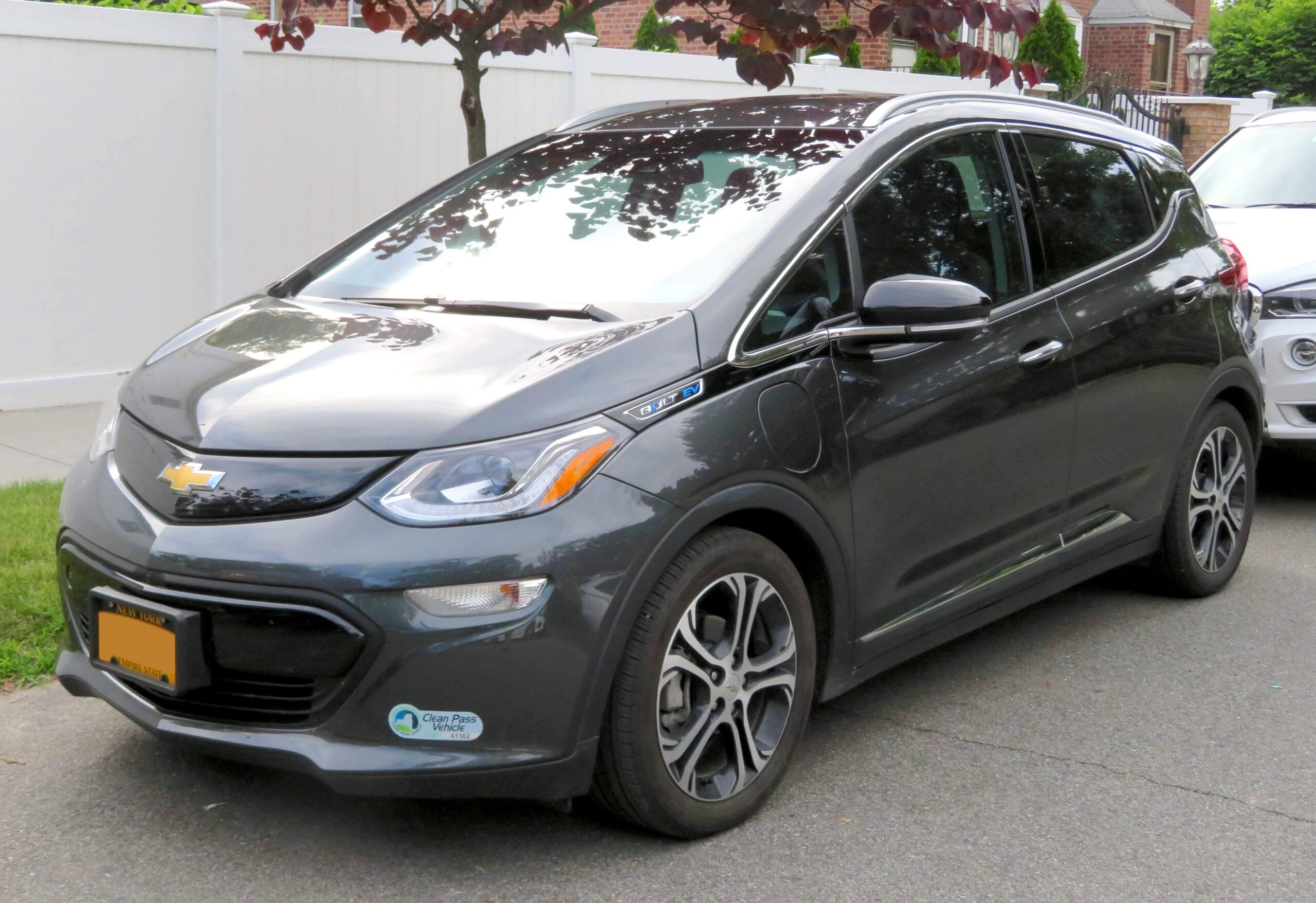
2. **Chevrolet Bolt EV**The Chevrolet Bolt EV holds a unique position in the discussion of battery replacement costs, primarily due to a widespread recall that impacted all 2017-2021 models. This recall was initiated due to a manufacturing defect that posed a fire risk, leading to General Motors replacing the battery packs for free. While this meant owners were not directly on the hook for the cost in these specific instances, it underscored a significant, widespread battery issue for the model.
Prior to the recall, and as an example of potential out-of-warranty costs, a dealership reportedly quoted a Chevy Bolt owner in November 2018 $16,250 for a battery replacement, with an additional $870 for labor. Considering the Chevy Bolt batteries are typically rated at 60 kWh, this original quote translated to approximately $271 per kWh. This figure, even back in 2018, was nearly 2.5 times higher than the average battery cost observed today, indicating a considerable expense for owners facing un-recalled or out-of-warranty failures.
Although the $16,000 figure remains largely unverified as a consistent replacement cost for the Bolt outside the recall, it has been widely quoted and debated within owner communities. The existence of such high quotes, even if anecdotal or from a specific period, emphasizes the potential financial burden that could have fallen on owners had the manufacturing defect not been covered by a recall. The sheer scale of the recall itself represents a massive financial outlay by the manufacturer, driven by the high cost of the battery component.
Despite the manufacturer-covered recall, the Chevrolet Bolt’s experience serves as a critical case study. It illustrates that while battery failures might be rare, when they are systemic due to production flaws, the associated replacement costs are substantial. For potential buyers of used Bolt models, especially those from the affected years, verifying recall completion and understanding any remaining warranty terms is crucial to avoid inheriting what could otherwise be a very costly issue.
Car Model Information: 2023 Volkswagen Tiguan 2.0T SE R-Line Black
Name: Chevrolet Bolt EV
Caption: 2022 Chevrolet Bolt EV
Manufacturer: General Motors
Production: unbulleted list
ModelYears: unbulleted list
Class: Subcompact car
BodyStyle: hatchback
Layout: Front-engine, front-wheel-drive layout
Predecessor: Chevrolet Spark EV
Categories: 2020s cars, All Wikipedia articles in need of updating, All articles containing potentially dated statements, All articles with unsourced statements, Articles containing potentially dated statements from February 2018
Summary: The Chevrolet Bolt EV (marketed in Europe as Opel Ampera-e) is a battery electric subcompact hatchback manufactured and marketed by General Motors under its Chevrolet brand from late 2016 until late 2023, with a brief hiatus between mid-2021 and early 2022.
The first-generation Bolt was developed and manufactured with LG Corporation. Sales of the 2017 Bolt began in California in December 2016; it was released nationwide and international markets release in 2017. A rebadged European variant was marketed as the Opel Ampera-e in mainland Europe. In 2017, the Bolt was the second-best-selling plug-in car in the United States. It was named the 2017 Motor Trend Car of the Year, the 2017 North American Car of the Year, an Automobile magazine 2017 All Star, and was listed in Time magazine’s Best 25 Inventions of 2016. The Ampera-e was discontinued after 2018. By the end of 2020, GM had sold 112,000 Bolt and Ampera-e cars worldwide. The first-generation Bolt had been subject to at least three recalls due to battery fire risks.
In mid-2023, GM officials said they would discontinue the Bolt; after outcry, they announced plans for a next-generation model, which is expected to be revealed in 2025 for model year 2026.
Get more information about: Chevrolet Bolt
Buying a high-performing used car >>>
Brand: Chevrolet Model: Bolt EV
Price: $22,818 Mileage: 53,865 mi.
Read more about: The 10 Most Dangerous New Cars for New Drivers: What NHTSA and Crash Test Results Reveal
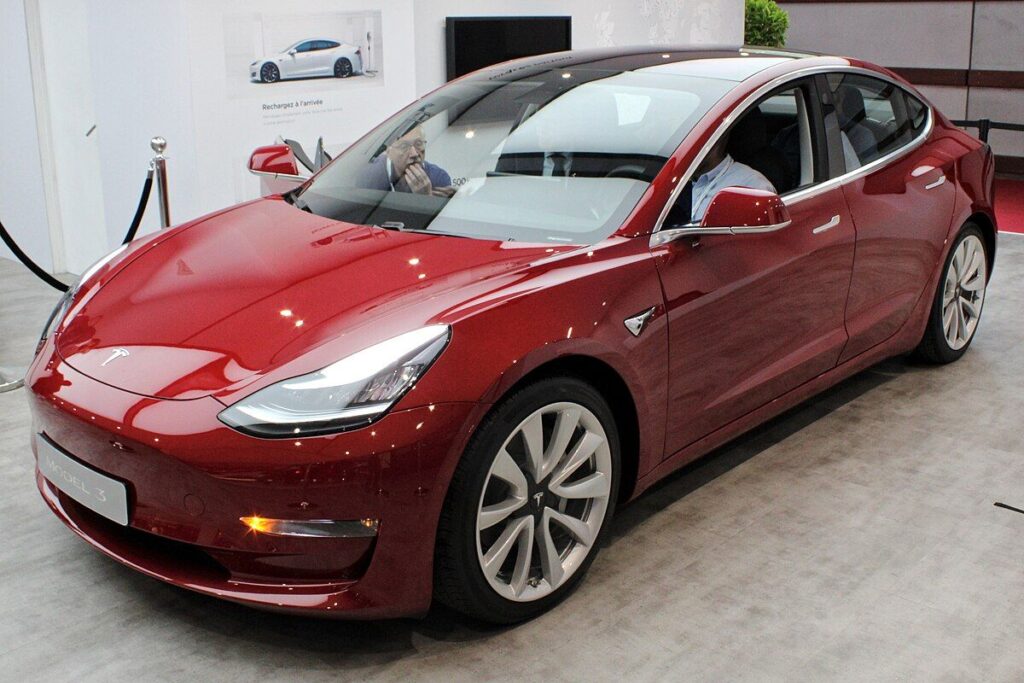
3. **Tesla Model S**The Tesla Model S, a pioneer in the luxury EV segment, also stands out when discussing battery replacement costs, particularly given its status as one of the oldest electric cars on the road. Early production Tesla Model S vehicles were among those noted by Recurrent as having replacement rates on the higher end of the average, which is not entirely unexpected given their age and advanced technology at the time of their release.
The cost of replacing a Model S battery pack can vary significantly, largely dependent on the pack’s size and capacity. For instance, a 75-kWh pack for a Tesla Model S was reported to cost $10,000 until recently, with prices now dropping to around $5,999. However, for those with the larger 100-kWh battery packs, the replacement cost can still climb as high as $15,500. These figures underscore the direct correlation between battery capacity and replacement expense, a common theme across larger, more powerful EVs.
Beyond just the size, the complexity of Tesla’s battery management system (BMS) initially presented challenges for third-party repairs. However, companies like Greentec have reportedly reverse-engineered Tesla’s BMS, allowing them to offer replacement services and even upgrades or downgrades in battery capacity. This development potentially offers more competitive pricing and flexibility for Model S owners facing out-of-warranty battery issues, although these services require specialized expertise and equipment.
While a $5,999 replacement for a 75-kWh pack might seem substantial, it can be a sound investment for an older Model S still valued at $20,000 or more, potentially extending its lifespan for another 15 years. This highlights a nuanced aspect of EV battery replacement: the cost, while high in absolute terms, can be a sensible economic decision relative to the car’s overall value and the cost of an internal combustion engine replacement for a comparable luxury vehicle. However, the higher end of the spectrum, particularly for larger packs, still represents a significant financial commitment.
Car Model Information: 2023 Volkswagen Tiguan 2.0T SE R-Line Black
Name: Tesla Model S
ModelYears: 2013–present
Alt: A front-three quarter view of a gray Model S
Caption: #2016–2019: First major update
Designer: Franz von Holzhausen
Weight: cvt
Height: cvt
Width: cvt
Length: cvt
Wheelbase: cvt
ElectricRange: cvt
Battery: kWh,lithium-ion battery
Motor: Unbulleted list
Transmission: Reduction drive
Related: Tesla Model X
Layout: Rear-motor, rear-wheel drive,Dual-motor, all-wheel-drive,Tri-motor, all-wheel-drive layout
BodyStyle: liftback,sedan (automobile)
Class: Full-size car
Assembly: Unbulleted list
Production: June 2012 – present
Manufacturer: Tesla, Inc.
Sp: us
Chassis: Unibody
Categories: 2020s cars, All-wheel-drive vehicles, All Wikipedia articles written in American English, All articles containing potentially dated statements, Articles containing potentially dated statements from 2025
Summary: The Tesla Model S is a battery-electric, four-door full-size car produced by the American automaker Tesla since 2012. The automaker’s second vehicle and longest-produced model, the Model S has been described as one of the most influential electric cars in the industry. Car and Driver named it one of the best cars of the year in 2015 and 2016. Its various accolades include the Motor Trend Car of the Year Award in 2013.
Tesla started developing the Model S around 2007 under the codename WhiteStar. Initially, Henrik Fisker was appointed as the lead designer for the WhiteStar project; after a dispute with Elon Musk, Tesla’s CEO, Fisker was replaced by Franz von Holzhausen. By 2008, von Holzhausen had designed what would become the production Model S’s exterior. Tesla unveiled a prototype of the vehicle in March 2009 in Hawthorne, California. In 2010, Tesla acquired a facility in Fremont, California, to produce the Model S, which was previously owned by General Motors and Toyota. Series manufacture of the car officially began at the Tesla Fremont Factory in June 2012. Tesla carried out the final assembly for European markets at its facilities in Tilburg, Netherlands, between 2013 and 2021.
The Model S typically uses either one or initially two alternating current induction motors; since 2019, dual-motor versions have used a permanent magnet motor in the front, though the high-performance Model S Plaid’s three motors are permanent magnet units by default. Constructed mostly of aluminum, the Model S shares 30 percent of its components with the Model X—a crossover SUV that was introduced in 2015. The Model S has undergone several updates during its production, the most prominent ones occurring in 2016 and 2021. These updates have usually included modifications to the motor, such as changes to power or torque, revised exterior elements, and refreshed interior features. One such change included the 2015 introduction of Tesla Autopilot—a partial vehicle automation advanced driver-assistance system.
In 2015, the Model S was the world’s best-selling plug-in electric vehicle. In 2012, it was included on Time’s list of the Best Inventions of the Year, and the magazine later included it on its list of the 10 Best Gadgets of the 2010s in 2019. In 2014, The Daily Telegraph described the Model S as a “car that changed the world”. Road & Track argued that, with the introduction of the Plaid and features such as the yoke steering wheel, Tesla managed to turn the Model S into “perhaps one of the worst [cars in the world]”.
Get more information about: Tesla Model S
Buying a high-performing used car >>>
Brand: Tesla Model: Model S
Price: $22,818 Mileage: 53,865 mi.
Read more about: Marelli Holdings Co.: Auto Parts Giant Files for Chapter 11 Amid Billions in Debt and Industry Upheaval
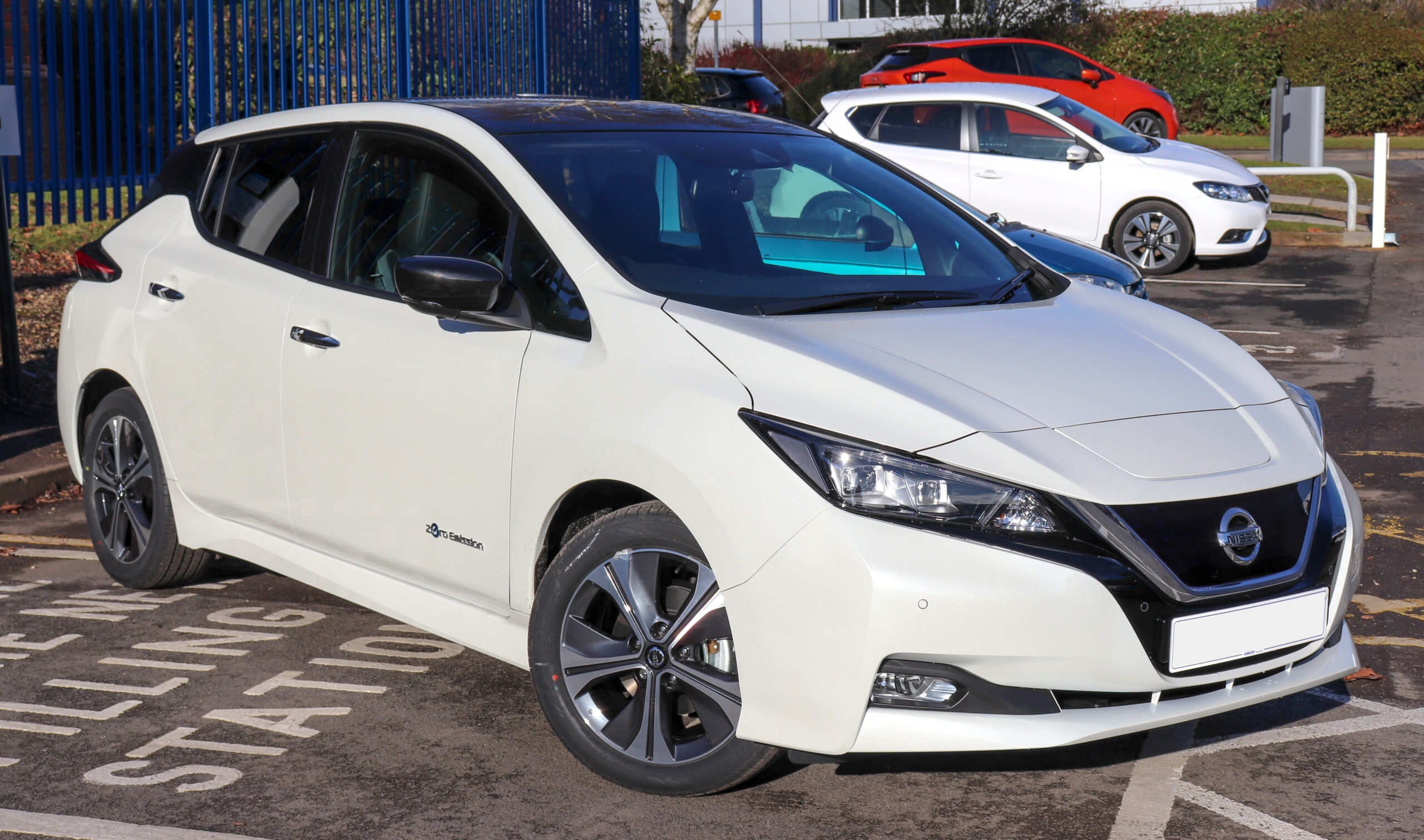
4. **Nissan Leaf**The Nissan Leaf holds the distinction of being one of the first mainstream electric vehicles to arrive in America, contributing significantly to the early adoption of EVs. As an older model, particularly its early production versions, the Leaf has been identified as being on the higher end of the average for battery replacements, mainly due to its longevity on the road.
When considering replacement costs, the Nissan Leaf presents an interesting scenario. While less expensive electric cars like the Leaf tend to have smaller batteries and therefore might cost less in absolute terms to replace compared to luxury EVs, the expense can still be disproportionately high relative to the car’s depreciated value. For example, a new battery pack for a similarly aged Nissan Leaf EV might cost around $5,000, which, for an older model, could be more than the car itself is worth.
This makes the Leaf a prime example of a ‘budget breaker’ from a value perspective. Investing $5,000 or more into a vehicle whose market value is significantly lower can be a tough pill to swallow for owners. It forces a difficult economic decision: whether to replace the battery and extend the life of an older, less valuable car, or to consider it a total loss and upgrade to a newer model, potentially incurring new vehicle depreciation.
Compounding this is the Nissan Leaf’s unique warranty structure, which measures battery degradation in 12 “segments.” If the battery falls below nine segments while under warranty, it qualifies for a replacement. This method, while specific, means owners must understand these metrics to determine their eligibility. Despite the challenges, the emergence of third-party repair options for older “cult classic” vehicles like the Leaf suggests a growing market for more affordable alternatives to dealership services, potentially making these vehicles more viable for long-term ownership through alternative means.
Continuing our comprehensive analysis of electric vehicle battery replacement costs, we now turn our attention to additional models that present unique ownership considerations. Understanding the nuances of these vehicles, from plug-in hybrids to full-size trucks, provides a clearer picture of the financial landscape for current and prospective EV owners. The variability in battery technology, design, and market support significantly impacts the long-term cost of ownership, making informed decision-making paramount. This further exploration aims to equip consumers with the knowledge to navigate potential challenges.
Car Model Information: 2018 Nissan Titan SV
Name: Nissan Leaf
Caption: A second generation Nissan Leaf
Manufacturer: Nissan
Production: October 2010 – present
ModelYears: 2011–present
Class: Unbulleted list
BodyStyle: Unbulleted list
Layout: Front-engine, front-wheel-drive layout
Predecessor: Unbulleted list
Categories: 2020s cars, All articles containing potentially dated statements, All articles with dead external links, Articles containing Japanese-language text, Articles containing potentially dated statements from December 2015
Summary: The Nissan Leaf is a battery-electric car manufactured by Nissan, produced since 2010. It was offered exclusively as a 5-door hatchback until 2025, which since then has become a crossover SUV model. The term “LEAF” serves as a backronym to leading environmentally-friendly affordable family car. The Leaf was unveiled on 1 August 2009 as the world’s first mass market electric and zero-emission vehicle. Among other awards and recognition, it received the 2010 Green Car Vision Award, the 2011 European Car of the Year, the 2011 World Car of the Year, and the 2011–2012 Car of the Year Japan. The Leaf’s range on a full charge has been steadily increased from 117 km (73 miles) to 364 km (226 miles) (EPA rated) by the use of larger battery packs and several minor improvements. As of September 2021, European sales totalled more than 208,000, and as of December 2021, over 165,000 had been sold in the U.S., and 157,000 in Japan. Global sales across both generations totalled 577,000 by February 2022. The Leaf was the world’s all-time top selling plug-in electric car until it was surpassed in early 2020 by the Tesla Model 3.
Get more information about: Nissan Leaf
Buying a high-performing used car >>>
Brand: Nissan Model: Leaf
Price: $21,685 Mileage: 89,835 mi.
Read more about: Unlocking Unbeatable Value: The 14 Best Used Car Deals for Savvy Buyers, Backed by Expert Analysis and Data
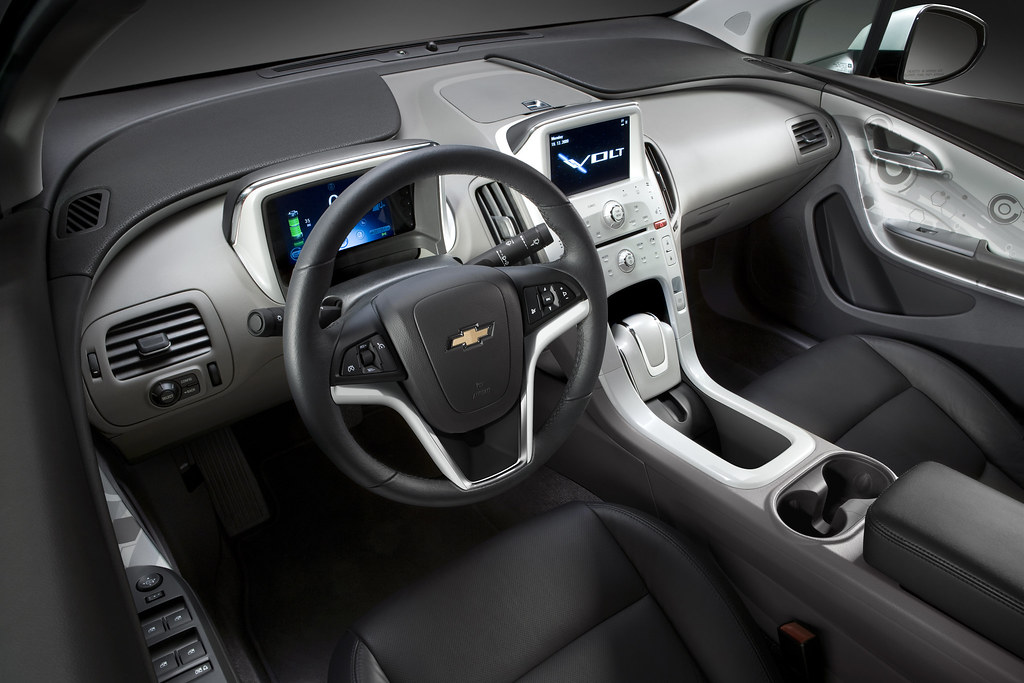
5. **Chevrolet Volt**The Chevrolet Volt, a pioneering plug-in hybrid electric vehicle (PHEV), offered a bridge between traditional gasoline cars and full electrics, combining an electric powertrain with a range-extending gasoline engine. While its battery pack is considerably smaller than those in pure EVs, the prospect of replacement still presents a notable expense for owners. Its hybrid nature means the battery undergoes different use cycles compared to a pure EV, yet degradation and potential failure remain a concern, especially as these vehicles age.
Reported costs for replacing the Volt’s 16 kWh battery have varied. A 2020 Greencars report indicated costs around $4,000, translating to approximately $240 per kilowatt-hour. However, the market for replacement parts can be dynamic, with remanufactured packs from specialists like Greentec Auto priced at $8,499 for 17-18 kWh capacities, putting the cost-per-kWh much higher at around $475. This wide range demonstrates the complexity of pinpointing a single, consistent replacement cost for an aging PHEV.
Interestingly, used battery packs for 2016-2018 Chevy Volts have been observed on platforms like eBay for roughly $3,000, equating to a lower $152-$163 per kWh for an 18.4 kWh pack. This stark contrast highlights the potential for consumers to seek more affordable alternatives outside official dealership channels. However, the availability of these options, coupled with reports of long waitlists for Volt batteries, underscores the challenges owners can face in securing timely and economically viable replacements, making the Volt another example where battery issues can impact overall value.
Car Model Information: 2025 Chevrolet Silverado 1500 RST
Name: Chevrolet Volt
Caption: 2012 Chevrolet Volt
Manufacturer: General Motors
Production: November 2010 – February 2019
ModelYears: 2011–2019
Class: Compact car
BodyStyle: liftback
Layout: Front-engine, front-wheel drive
Designer: Jelani Aliyu
Categories: All Wikipedia articles written in American English, All articles containing potentially dated statements, All articles with dead external links, Articles containing potentially dated statements from August 2016, Articles containing potentially dated statements from February 2014
Summary: The Chevrolet Volt is an electric vehicle car that was manufactured by General Motors, and also marketed in rebadged variants as the Holden Volt in Australia and New Zealand and the Buick Velite 5 in China, and with a different fascia as the Vauxhall Ampera in the United Kingdom and as the Opel Ampera in the remainder of Europe. Volt production ended in February 2019. While similar in some ways to hybrid vehicles, the Chevy Volt is an electric car with an onboard gasoline generator.
Sales of the Volt began in the United States in mid-December 2010, followed by some European countries and other international markets in 2011. Global combined Volt/Ampera-family sales totaled about 177,000 units by the end of October 2018. The U.S. was the leading market, with 157,054 Volts delivered through the end of 2019, followed by Canada with 16,653 Volts sold through September 2018. Just over 10,000 Opel/Vauxhall Ampera cars had been sold in Europe as of June 2016. Until December 2018, the Volt/Ampera family of vehicles was the world’s bestselling plug-in hybrid vehicle. When it was discontinued, the Chevrolet Volt was still listed as the top-selling plug-in hybrid in the American market.
The Volt operates as a pure battery electric vehicle until its battery capacity drops to a predetermined threshold from full charge. From there, its internal combustion engine powers an electric generator to extend the vehicle’s range as needed. While running on gasoline at high speeds the engine may be mechanically linked (by a clutch) to the car’s gearbox, improving efficiency by 10% to 15%. The Volt’s regenerative braking also contributes to the on-board electricity generation. Under the United States Environmental Protection Agency (EPA) cycle, the 2013–15 model year Volt all-electric range is 38 mi (61 km), with a combined electric mode/gasoline-only rating of 62 mpg‑US (3.8 L/100 km; 74 mpg‑imp) equivalent (MPG equivalent).
The second-generation Volt’s improved battery system and drivetrain increased the all-electric range to 53 miles (85 km), its EPA-rated fuel economy in charge-sustaining mode to 42 mpg‑US (5.6 L/100 km; 50 mpg‑imp), and the combined city/highway fuel economy in all-electric mode to 106 MPG-e, up from 98 MPG-e. Deliveries to retail customers in the U.S. and Canada began in October 2015 as a 2016 model year.
The Volt won several awards, including the 2009 Green Car Vision Award, 2011 Green Car of the Year, 2011 North American Car of the Year, 2011 World Green Car, 2011 SAE Best engineered car, 2012 European Car of the Year, and 2016 Green Car of the Year.
Get more information about: Chevrolet Volt
Buying a high-performing used car >>>
Brand: Chevrolet Model: Volt
Price: $49,966 Mileage: 12,533 mi.
Read more about: Ford Issues Major Recall: Critical Power Brake Assist Loss Risk for 312,000+ Bronco, F-150, Expedition, Ranger, and Navigator Models
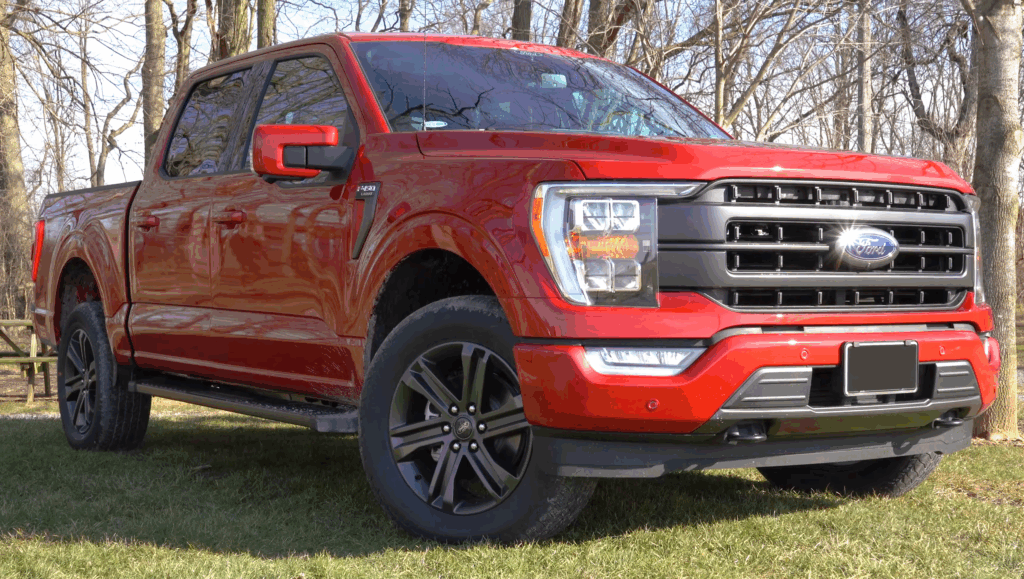
6. **Ford F-150 Lightning**The Ford F-150 Lightning represents a pivotal moment in the electric vehicle transition, bringing a full-size, all-electric pickup truck to the mainstream. As a large, heavy-duty vehicle designed for work and extended range, its battery pack is inherently substantial. This places the F-150 Lightning squarely in the category of electric vehicles where larger battery capacities directly correlate to higher potential replacement costs, a principle consistently observed across the EV market.
While specific, widely reported out-of-warranty battery replacement costs for the F-150 Lightning are not yet prevalent, its classification alongside the Tesla Model S as a ‘large, luxury or long-range electric vehicle’ strongly suggests that replacement expenses would reside on the higher end of the typical $7,000 to $30,000 range. The sheer scale and advanced technology required for a battery capable of powering such a vehicle contribute to its premium cost, both upfront and for any potential long-term component replacements.
Ford has shown a forward-thinking approach to battery sustainability, with plans to incorporate battery recycling at its new BlueOval City complex. This initiative, while not directly reducing immediate replacement costs for existing owners, signals a commitment to managing the lifecycle of EV batteries. Such efforts are crucial for long-term affordability and environmental responsibility within the burgeoning electric truck segment, potentially leading to more cost-effective solutions in the future.
For current and prospective F-150 Lightning owners, the advice remains clear: while the robust factory warranty provides extensive coverage, understanding the substantial investment represented by the battery pack is key. Although the likelihood of needing a replacement remains low, the potential financial impact, given the truck’s large battery and advanced engineering, would be significant if an out-of-warranty replacement were ever required.
Car Model Information: 2023 Volkswagen Tiguan 2.0T SE R-Line Black
Name: Ford F-150 Lightning
Manufacturer: Ford Motor Company
Related: Ford F-Series (fourteenth generation)
Assembly: Dearborn, Michigan
ModelYears: 2022–present
Production: April 2022 – present
Layout: Dual-motor, four-wheel-drive
Platform: Ford T platform#T3
Class: Pickup truck
Sp: us
Battery: lithium-ion
Motor: permanent magnet motor
ElectricRange: Unbulleted list
Abbr: on (extended battery)
Powerout: Unbulleted list
Charging: Unbulleted list
Designer: Unbulleted list
Wheelbase: cvt
Length: cvt
Width: cvt
Height: cvt
Weight: cvt
Categories: All Wikipedia articles in need of updating, All Wikipedia articles written in American English, All articles containing potentially dated statements, All articles with unsourced statements, Articles containing potentially dated statements from June 2022
Summary: The Ford F-150 Lightning is a battery electric full-size light duty truck unveiled by the Ford Motor Company in May 2021 as part of the fourteenth generation Ford F-Series. Four models have been announced, and all models initially will be dual-motor, four-wheel-drive, with EPA range estimates of 240–320 mi (390–510 km). A commercial-grade version of the all-wheel drive (AWD) truck is sold in the United States, with higher-power/trim/range models also sold. The F-150 Lightning began production on April 26, 2022.
Get more information about: Ford F-150 Lightning
Buying a high-performing used car >>>
Brand: Ford Model: F-150 Lightning
Price: $22,818 Mileage: 53,865 mi.
Read more about: Unmasking the Hype: 14 Overrated Trucks & SUVs That Fall Short for Tough Jobs, According to Engineers and Towing Tests
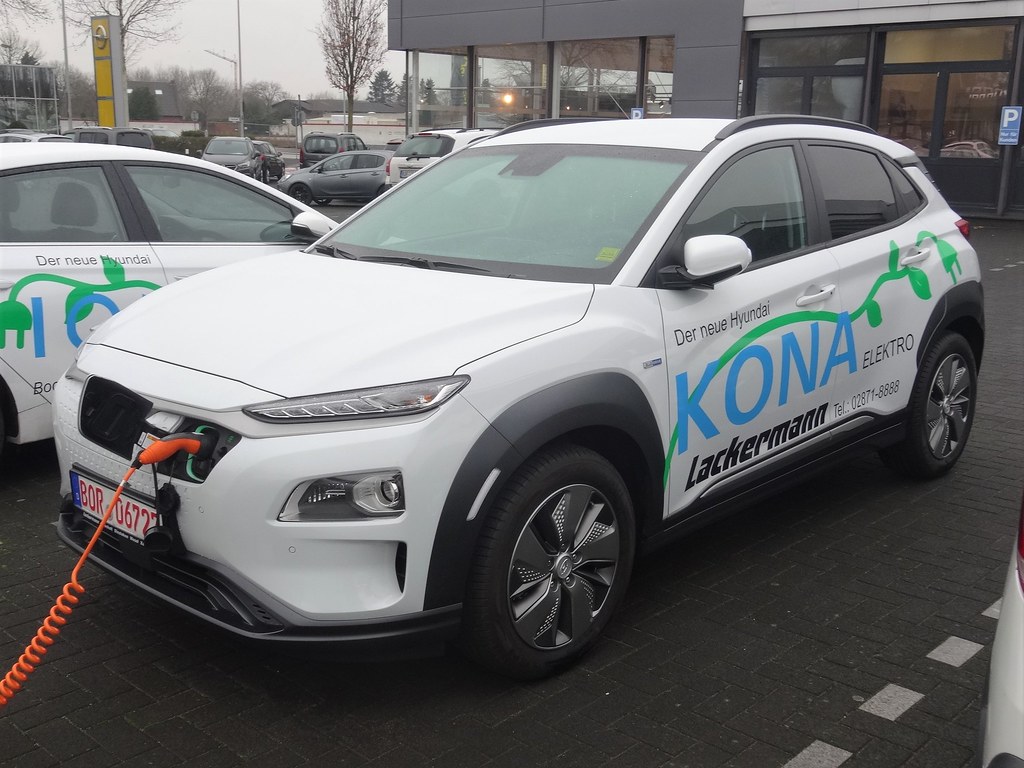
7. **Hyundai Kona Electric**The Hyundai Kona Electric quickly became a popular choice in the compact EV segment, offering respectable range and performance in a versatile package. However, its ownership experience has been significantly shaped by a major battery recall, illustrating how manufacturing flaws, though rare, can lead to widespread battery issues and subsequent replacement campaigns. This situation, much like with the Chevrolet Bolt EV, provides a critical case study in manufacturer responsibility and consumer protection.
The context explicitly states that a flaw originating in production led to a recall for the Hyundai Kona Electric battery, and ‘Luckily, with this issue, the manufacturer covers the replacement cost, even if the vehicle is out of warranty.’ This crucial aspect means that affected owners were spared the substantial financial burden typically associated with battery replacements, as the manufacturer absorbed these costs.
This recall demonstrates a significant layer of protection for consumers against systemic battery defects. While the inconvenience of a recall is undeniable, the assurance that a manufacturer will cover replacement expenses for a widespread defect, even for vehicles outside their standard warranty period, mitigates a major financial risk. This also reinforces the importance of monitoring recall notices and ensuring any necessary repairs are completed, especially for those considering a used Kona Electric.
Although specific out-of-warranty replacement cost figures for the Kona Electric’s battery are not as widely published as for some other models, the very existence and scale of the recall inherently points to the substantial cost of these components. The manufacturer’s decision to cover these replacements underlines that, without such intervention, individual owners would have faced a ‘budget-breaking’ scenario. Therefore, while its recall history highlights a potential issue, it also showcases a robust safety net for owners against manufacturing defects.
### Broader Trends in Battery Affordability, Warranty Protections, and Practical Advice
While the individual experiences of these electric vehicles paint a complex picture of battery replacement costs, broader trends within the EV industry offer a more reassuring outlook for the future. Continuous advancements in battery technology, alongside shifts in manufacturing and market dynamics, are collectively working to make EV ownership more sustainable and less financially daunting in the long run.
**The Declining Cost of Batteries**
One of the most encouraging trends is the rapid decline in battery prices. The cost of lithium-ion EV batteries plummeted by 89 percent between 2008 and 2022, a trajectory that is very much continuing. This dramatic reduction is a direct result of increased production volumes, technological advancements, and a growing supply chain, making battery components progressively more affordable.
Projections indicate this trend will only accelerate. Battery prices have fallen from over $400 per kilowatt-hour to an estimated $111 per kilowatt-hour by the end of 2024. Goldman Sachs further projected that this could mean a 100 kWh battery pack, common in long-range vehicles, could be $1,000 cheaper each year. Such significant price drops suggest that the replacement cost of a battery in the future will be far more manageable than perceived today.
The emergence of more affordable battery chemistries, such as Lithium Iron Phosphate (LFP), is also playing a crucial role. These cells have been observed at prices as low as $56 per kilowatt-hour in some markets, offering a promising glimpse into future affordability. Coupled with increased domestic production and sourcing of materials, experts like Liz Najman of Recurrent believe that by 2030, replacing an EV battery could become cheaper than replacing an internal combustion engine.
Furthermore, the drive towards a circular economy through battery recycling initiatives is adding another layer of cost reduction and sustainability. Companies like Ford, Mercedes-Benz, and Tesla are investing heavily in recycling plants, with claims of recovering 92 percent to 95 percent of raw materials like cobalt, nickel, and lithium. This not only lessens reliance on new, expensive raw material extraction but also contributes to lowering the overall cost of new and remanufactured battery packs.
**Robust Warranty Protections for Consumers**
Beyond declining costs, a critical safety net for EV owners comes in the form of comprehensive battery warranties. Every new EV sold in the United States is federally mandated to include a battery warranty of at least eight years or 100,000 miles, whichever comes first. This coverage is notably longer than standard vehicle warranties, providing significant peace of mind to buyers.
Some regions and manufacturers offer even more extensive coverage. For instance, in California, the warranty extends to 10 years or 150,000 miles, while some brands like Rivian cover up to 175,000 miles. These warranties typically guarantee a replacement if the battery’s capacity falls below a certain percentage of its original charge—often 70 percent, although specific thresholds vary (e.g., 60 percent for the Chevrolet Bolt, or nine segments for the Nissan Leaf).
It is important to understand that while these warranties cover unexpected battery failures or premature degradation, they may not cover damage resulting from accidents, which could potentially void the warranty. In such scenarios, the financial responsibility might fall to the owner or their insurance. Nevertheless, the extensive coverage ensures that for the vast majority of owners, unexpected battery failures due to manufacturing defects or normal wear and tear within the warranty period will not result in out-of-pocket replacement costs, with manufacturers often providing remanufactured packs.
**Practical Advice for Current and Prospective EV Owners**
For those driving or considering an EV, taking proactive steps can further extend battery life and manage potential long-term costs. While EV batteries are designed to be robust and durable, certain charging habits and ownership practices can make a difference in their longevity.
Experts widely recommend maintaining a battery charge between 20 percent and 80 percent. Consistently allowing the battery to fully discharge or routinely charging it to 100 percent can accelerate degradation over time. By keeping the battery within this optimal range, owners can significantly prolong its lifespan and maintain its efficiency.
Additionally, the speed of charging impacts battery health. While DC fast chargers offer convenience for quick top-ups, frequent reliance on them can reduce battery life more quickly than slower charging methods. Whenever possible, utilizing Level 2 or standard AC charging for daily use helps preserve battery integrity, allowing it to last longer. For those considering a used EV, consulting a Recurrent Report before purchase can provide valuable insights into the vehicle’s battery health and history.
Car Model Information: 2023 Volkswagen Tiguan 2.0T SE R-Line Black
Name: Hyundai Kona
Caption: Hyundai Kona N Line (SX2)
Manufacturer: Hyundai Motor Company
Aka: Hyundai Kauai (Portugal)
Production: 2017–present
ModelYears: 2018–present
Class: Subcompact crossover SUV
BodyStyle: SUV
Layout: ubl
Categories: 2020s cars, All-wheel-drive vehicles, All Wikipedia articles in need of updating, All Wikipedia articles written in British English, Articles containing Chinese-language text
Summary: The Hyundai Kona is a subcompact crossover SUV produced by the South Korean manufacturer Hyundai. The first-generation Kona debuted in June 2017 and the production version was revealed later that year. It is positioned between the Venue or Bayon and the Tucson in Hyundai crossover SUV line-up. The battery electric version called the Kona Electric (or Kona EV) was first launched in South Korea during the first half of 2018 and rolled out gradually worldwide afterwards.
Get more information about: Hyundai Kona
Buying a high-performing used car >>>
Brand: Hyundai Model: Kona Electric
Price: $22,818 Mileage: 53,865 mi.
Read more about: The 12 Most Boring Crossovers in the Market Right Now: What Critics and Performance Specs Reveal for Enthusiasts.
Ultimately, while the specter of expensive battery replacements has been a persistent concern, the data increasingly suggests that the odds of needing one are low, especially for newer models with advanced thermal management and robust battery management systems. With declining battery costs, comprehensive warranties, and simple proactive measures, EV ownership is proving to be an increasingly practical and cost-effective choice for modern drivers.



